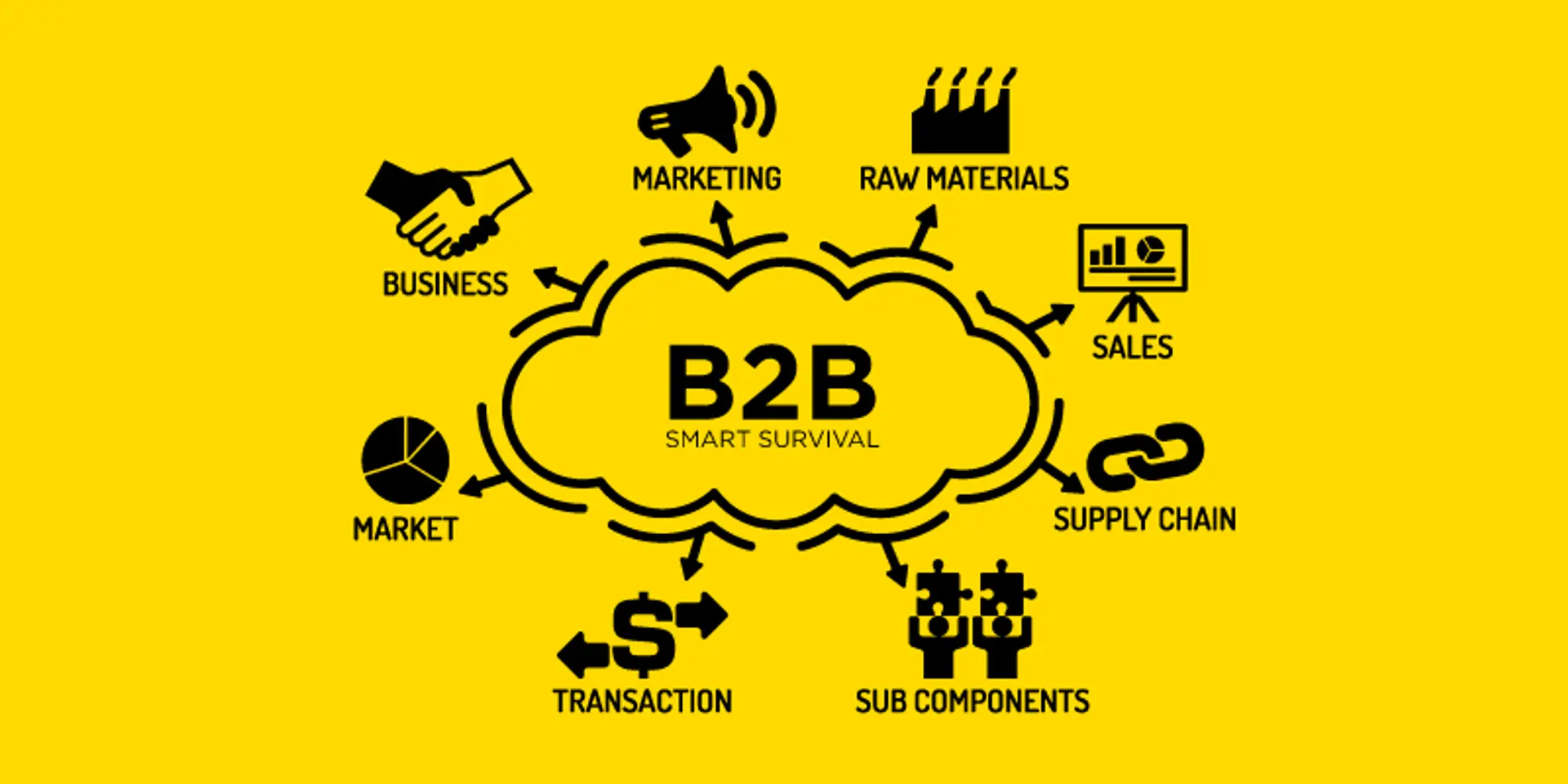B2B vertical e-commerce - the strategy for smart survival
When I say B2C e-commerce, you can probably name a minimum of 10 companies within a minute.
When I talk about B2B e-commerce, I presume an average audience to be struggling after Alibaba. Well, considering Alibaba’s GMV on November 11 last year alone was $14.4 billion, I will not hold it against you. They are a name to reckon with!
However, the popularity of a B2C company stems solely from its products. One advertisement around “dresses on sale” conveys everything, from a range of products, prices, variety and discounts to delivery and customer support. The more products there are, the merrier it is. The more discounts there are, the better it is.
You, me, your neighbour, my neighbour, your parents, my siblings, siblings of friends, teachers in German class, doctors in rural postings, the guy working in the garage, my boss, our maids - we all shop online the same way. We all get attracted to e-commerce companies thanks to that one ad. We all buy things on discounts. All of us will visit the website as and when we need a particular electronic or baby product. Thus establishing horizontal e-commerce as the ‘Big Daddy of Online Shopping’.

A B2B company is slightly different.
B2B is Business to Business. A business easing the lives of other businesses. A business directing all its resources into making their clients’ businesses thrive. It is about making processes simpler and faster to increase efficiency, productivity and profitability.
Which is exactly where the problem arises.
These SMEs and various multinational businesses are all selling the same product but want to be unique at the same time. They are looking for specifications and customisations. They are all looking for food containers or stretch films of great quality which are unique.
So what important role does B2B e-commerce play?
The importance of B2B e-commerce lies in streamlining various industrial sectors which build the backbone of a country’s economy.
Assuming how unaware one is about the B2B e-commerce scene, let’s get familiar with the concept through a few examples.
B2B e-commerce #1: Quill.
Quill sells office supplies online (well, at least 70 percent of their sales are online). So, it is safe to say that they are an e-commerce provider of office supplies. In bulk or small quantities, they provide all kinds of products required in an office setup.
Quill is owned by Staples Inc., and is recognised as their most profitable division, accounting for about 25 percent of the company's net income. That is a huge chunk of business coming in from just one division. In a matter of 10 years, between 1998 and 2009, Quill grew from $500 million in revenues to over $1.3 billion.
B2B e-commerce #2: Xiameter.
Another page from history: Xiameter.
When silicone, the chief product of Dow Corning, started becoming a commodity, they decided to adapt themselves with the maturing market.
In 2002, Dow Corning created the Xiameter brand, an online-only distributor of silicone-based products likes gels, resins and fluids.
In only 3 months, Dow Corning earned back its investment.
Dow Corning saw sales rise from $2.49 billion in 1995 to $3.37 billion in 2004, a compound annual growth rate of 3 percent.. Its sales then rose a staggering 62 percent in the next four years, reaching $5.45 billion in 2008; its net income increased more than two-and-a-half times to $739 million.
As of 2011, Xiameter offers 2,100 of Dow Corning’s 7,000 products. That is 30 percent of Dow Corning’s product portfolio!
This is B2B e-commerce powerplay in first world countries.
Let’s shift focus to the Indian scenario.
A quick search on Google about “B2B e-commerce in India” results in news about top B2B startups venturing into various sectors like software, technology, hardware, logistics and industrial goods in India.
Yes. Startups.
This reveals two things:
- There is huge untapped market potential.
- Young entrepreneurs are looking for opportunities in the unexplored B2B avenue.
In India, the B2B sector is unevaluated, unexplored and a mystery, and established businesses have left it at that.
Their way of doing business has been set. We cannot really change it - is the attitude at large.
Forgetting the power of innovation.
The Indian B2B scene has not witnessed much success, unfortunately. There have been many players - Alibaba included - who could not establish their foothold. Multiple reasons like lack of infrastructure, purchase on credit and orthodox ways of doing business have been cited.
But the biggest reason is the variety of ways in which businesses in India function for different products. For example, logistics for chemicals is designed differently from packaging or machinery. This is true for other countries, but more so for India.
Hence earlier, businesses failed to project a strong presence despite resources, financial backup and branding. These businesses followed a horizontal e-commerce business model when the country was in dire need of business models with a deep understanding of that particular product market.
The examples mentioned above indicate the differences between B2C and B2B companies in terms of revenue or products. But, there is more to them than meets the eye.
Quill sells office supplies. Xiameter sells silicone products. Bizongo supplies packaging. Zhaosuliao supplies plastic raw materials.
All the companies above have one thing in common: business model.
Their business models strongly believe in adopting vertical e-commerce. Their success is the result. In a nutshell, vertical e-commerce is one goal and multidimensional audiences; one category and multiple product variations; one client and multiple customisations.
Vertical e-commerce: a smart survival strategy for B2B e-commerce in India?
This is a question I have been asking, researching, surveying, and digging deep into to discover whether e-commerce is really a bubble and who can survive it smartly.
Undoubtedly, browsing the internet has become a habit now. Social media presence has become inevitable. Online shopping is following suit.
With so much information at the tip of your fingers, one wants value for money more than anything. Indians are definitely a step ahead in demanding the best rates and discounts, and we are not even shy about it. In fact, we proudly accept the global attention showered on us for being “discount mongers and coupon grabbers”.
Anyway, here’s a list (there is always a list!) of why vertical e-commerce could be the perfect solution.
- Deeper range and understanding of productsI respect it when a salesperson knows his product. In fact, I love it when I ask for one thing and end up getting a range of choices for it: from colours and brands to designs for that particular type of product. Let’s just say they have a customer for life! Bizongo deals in packaging products. We have 438 types of plastic crates alone.
- Need I say more?
- User Experience: perfectedA vertical business knows what you are looking for. If the courier bag needs a POD jacket or if a particular brand is more trusted than others, the filters are extremely intuitive. It is like someone reading your mind!These guys are well researched. They know exactly where the customer will face a problem. Their in-depth understanding of user behaviour stems from months of research, surveys, and facing practical problems.
- Did somebody call for a specialist?When there is a major leakage problem in your home repeatedly, you look beyond the maintenance guy. You look for a plumber- a specialist in handling water faucets and piping. Scale this scenario to a multinational corporation. That’s right, you would give the plumber a contract.A B2B e-commerce company has a minimum ticket size of thousands of dollars in just one transaction. They would willingly put their faith in a specialist. This specialist expertly handles one aspect of their business.
- ONLY cater to your own needs When I receive mails from horizontal e-commerce companies, they are quite generic. There would be a blender here, a phone there, maybe shoes, fruits, books and a dish washing soap thrown in; discounts blinking all over the mail.When I shop from a clothing e-commerce website, I get suggestions based on the filters I had chosen at one point of time in the past. They take the pain to remember, and design to my needs accordingly.There, my friend, lies the difference. If a company makes an effort to help me find what I am looking for or what I really need, they can take all my money.As I write this, my marketing team is working on a mailer which blends perfectly with the mindset of our clients. Being a B2B company, these clients have been segregated, categorised and listed based on their choice of industry.
- In a vertical e-commerce company like ours, sending out generic emails is not even an option. Imagine a horizontal e-commerce model taking so much pain for customisation. With the popularity these companies tend to gain, their resources are unable to keep an in-depth track of each and every customer.
By fine tuning customer experience and becoming a wizard in a specific domain, vertical e-commerce identifies its roots in smart survival and long term growth.
With a huge market at its disposal and a mindset willing to acknowledge the internet, the B2B space in India is gaining traction. To persevere against the various policies surrounding several sectors, a vertical e-commerce business model will prove to be an effective strategy for sustenance.
After all, a jack of all trades, but master of none soon fades, because he could not perfect any one single trade.
(Disclaimer: The views and opinions expressed in this article are those of the author and do not necessarily reflect the views of YourStory.)







